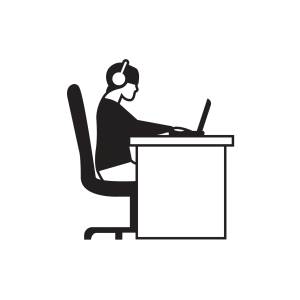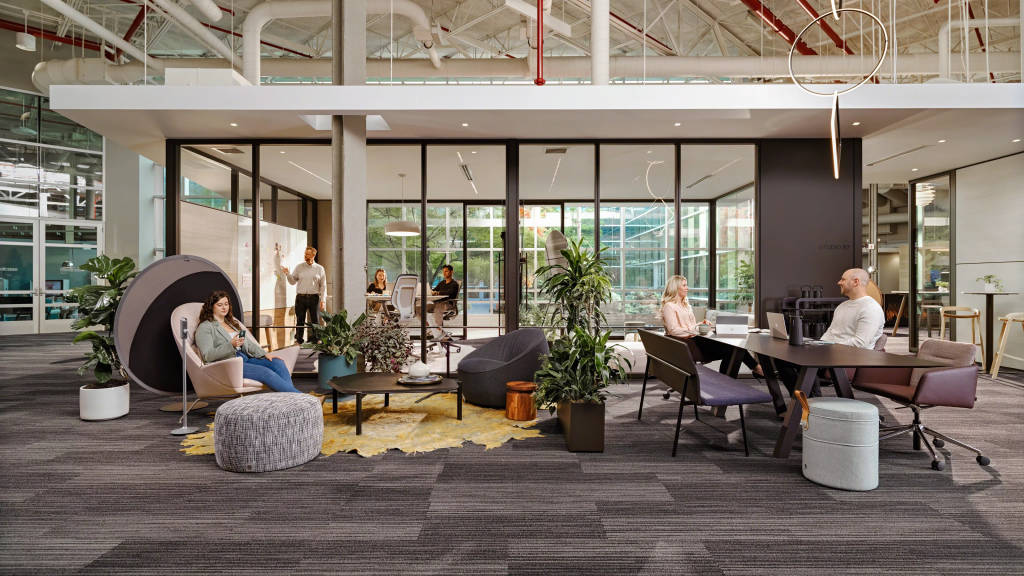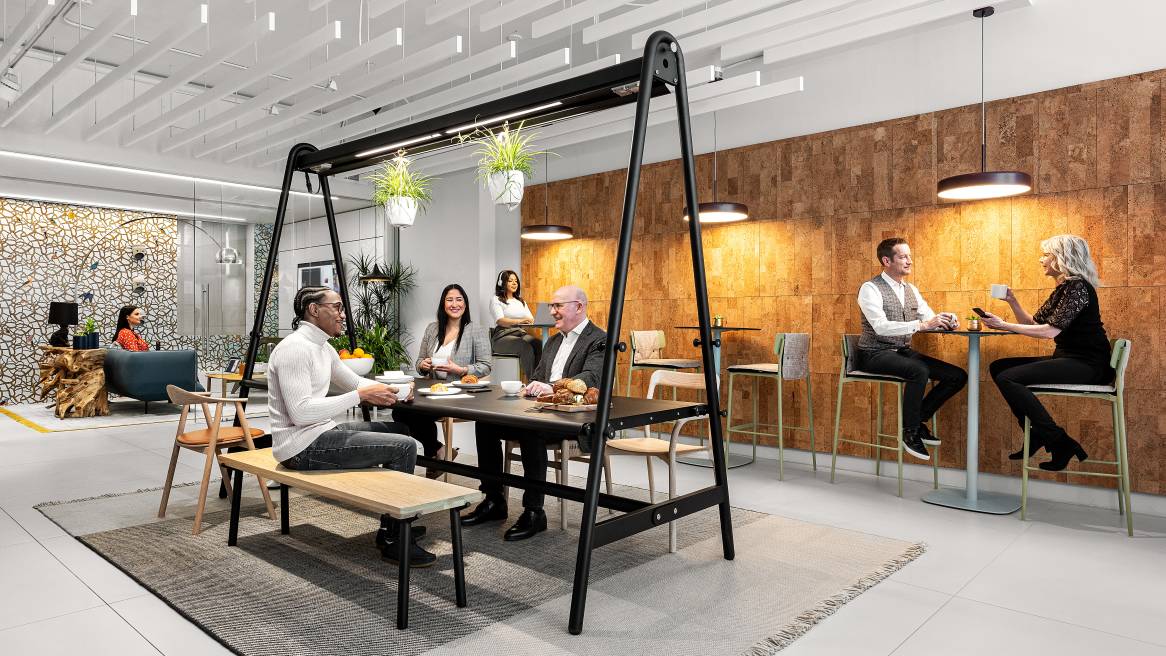A New Hierarchy of Needs at Work
New Research shows how workers have changed and how the workplace needs to change, too.
How people work will never go back to the way it was before the pandemic because why people work has changed forever. The hybrid worker of 2022 is foundationally different from the office worker of 2019. Through the pandemic, people around the world experienced a collective trauma that caused them to change their priorities and outlooks about life and work on a visceral level. At the same time people learned remote work techniques, tools and enhanced technology which helped them feel greater control over where and how they worked. These two dynamics collided to create a fundamental shift in what people need at – and from – their workplace as they return to the office. People at work have a new set of needs and, much like Maslow’s Hierarchy, they range from basic to more complex.
New Needs
Steelcase principal researcher Patricia Kammer says today’s business leaders recognize the best place to do work is in the office. That’s where serendipitous interactions can occur – where energy, collaboration, engagement, connection and shared accountability take place. And they want that back. But what some may not understand, says Kammer, is the gravity of the changes brought on by the pandemic.
“We all experienced trauma in some way, shape or form,” says Kammer. “We all grieved and experienced different kinds of loss.”
That pandemic trauma caused people to reckon with how they were spending their time, both at home and at work. People want more control, agency and intentionality about living, and that extends to the workplace, too. Kammer says leaders need to understand this fundamental change if they want to build the right culture that supports a new era of work centered around personal value for the employee.
“If I’m going to go into work, it better be worth my time,” Steelcase senior researcher Patricia Wang says of the mindset of today’s employees. “I need a distinctive experience that I can’t get anywhere else. For example, that could be reconnecting with teammates or lightly floating a new idea for feedback, after the meeting. So, organizations need to think about what the promise of their workplace is and how they might support leaders to help enable that promise to come true.”
It was through in-depth interviews with dozens of hybrid workers that Kammer and Wang began to see a new hierarchy of workplace needs emerge. Prior to the pandemic, every worker needed a functional and supportive environment that included the space and tools required of their job. Post pandemic, however, new tools and resources are needed in the office to support hybrid work. Organizations and designers need to be intentional about creating a complete and holistic experience to make the workplace worthwhile for people.
- ENHANCE PERFORMANCE: The most fundamental need is to help people get work done better and faster than they could at home. That means providing better technology, tools and spaces that help people do their best work.
- SOCIALIZE WITH PURPOSE: This is where soft and hard skills meet to help people do their best work. People need spaces that are intentionally designed to help them build relationships and make emotional connections. This, in turn, eliminates barriers to cooperation, builds team cohesiveness and influences others to advance work.
- CREATING COMMUNITY: Just as Maslow’s Hierarchy recognized people’s need for self-actualization, in the workplace that connects people to their place, to a group, team or their organization. People need to participate in activities that align their values with others’. Engaging in collective rituals like volunteer projects, cultural celebrations, and personal milestones brings meaning to work.
Not All Hybrid Workers Are the Same
Hybrid workers are not all the same and the different roles they fill require different types of spaces. Steelcase researchers found hybrid workers fell into three distinct categories who, based on the demands of their role, need to use the workplace differently. Creating the right spaces for the right experiences means understanding that hybrid employees have a greater variety of needs.
Anchored Worker

Their role requires them to have a personal, assigned workspace which is tied to a specific workplace process. Because they work primarily at their desk, this worker values having a place to store belongings but needs acoustical and visual privacy. This role can also be helped by having places to ‘get away’ for privacy without leaving the office.
Untethered Worker

The untethered worker doesn’t have a dedicated workspace, but their role requires them to be in the office for a set amount of time per week. This person could work in unassigned team spaces or find themselves in shared social settings, which invite interruption but promote engagement. They need flexible environments to support their varying work modes and to allow them to go from social settings to more private focused areas.
Destination Worker

This person’s role gives them flexibility about when, where and how they work. They typically come to the office to participate in collaborative work such as meetings, complex problem-solving, or mentorship. They gravitate toward collaborative spaces that can be arranged in a variety of ways to be more visible or have greater privacy. They also need a range of diverse spaces where they can do individual work, which allows them to continue their workday at the office and stay productive.

New Inspiration for the Workplace
To solve for the new needs of hybrid workers (whether it’s anchored, untethered or destination workers), organizations need to rethink the role of the office. A new source of inspiration for the workplace based on the changing needs of organizations and people is a great neighborhood – vibrant and active communities where people come together.
Neighborhoods at work, like the ones people live in, provide a home base for people and teams, or departments. They include a variety of interconnected spaces that support different types of work, a mixture of uses and the natural flow from one to another. They include individual assigned spaces or shared areas for the team, collaboration spaces for in-person and virtual interactions, places with privacy for focused heads-down work, and areas to gather, socialize and learn with teammates.
“We need to rethink how we are engaging people,’ says Kammer. “How we grow people and ultimately how we serve them – how we attract them to the office and have them leaving healthier than when they arrived.”
IDEAS FOR DESIGNING NEIGHBORHOODS
Explore how to design spaces that make hybrid work for any type of hybrid worker.


